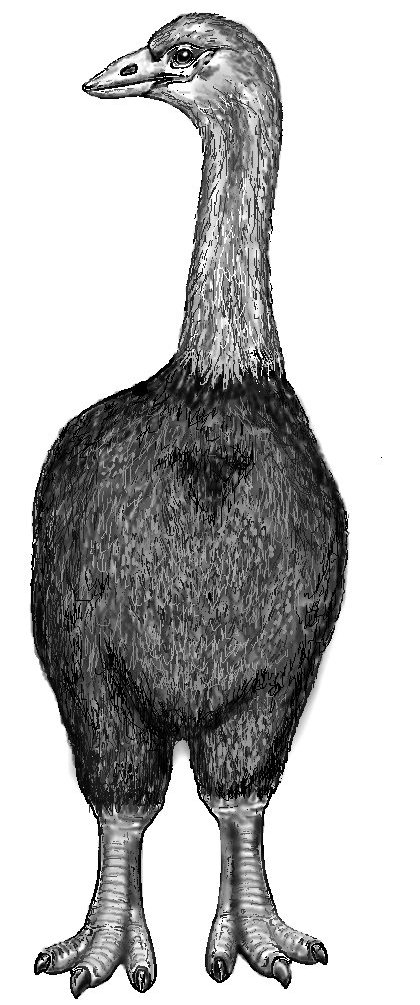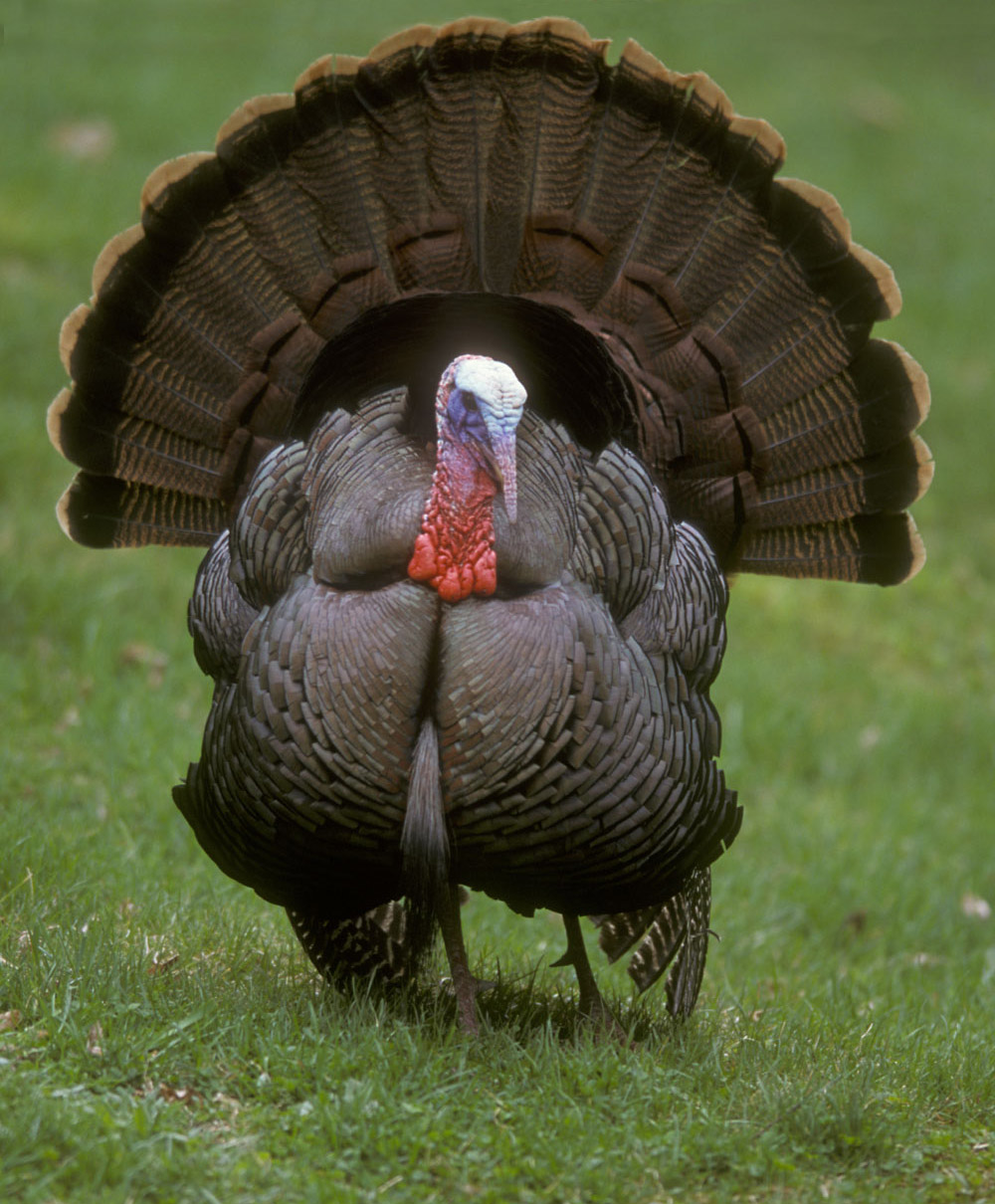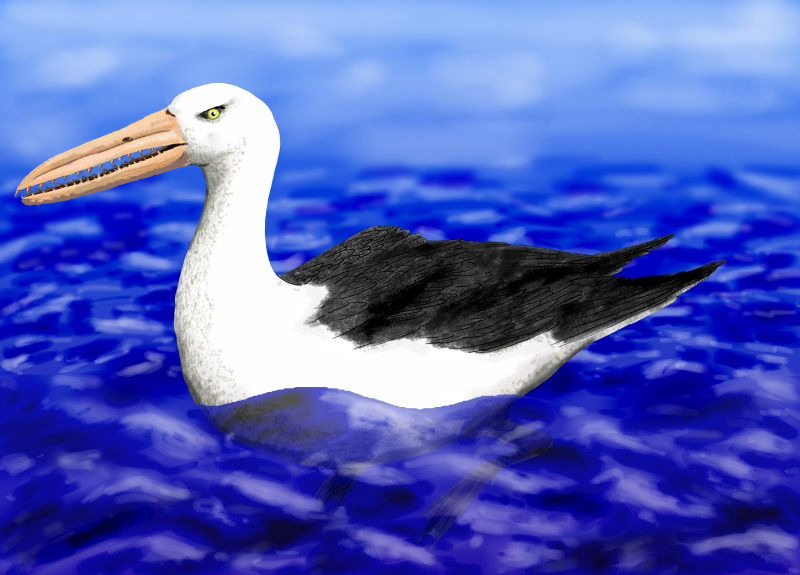|
Dromornis Murrayi
''Dromornis'' is a genus of large to enormous prehistoric birds native to Australia during the Oligocene to Pliocene epochs. The species were flightless, possessing greatly reduced wing structures but with large legs, similar to the modern ostrich or emu. They were likely to have been predominantly, if not exclusively, herbivorous browsers. The male of the largest species, ''Dromornis stirtoni'', is a contender for the tallest and heaviest bird, and possibly exhibited aggressive territorial behaviour. They belong to the family Dromornithidae, extinct flightless birds known as mihirungs. Taxonomy The genus was erected to separate a new species, ''Dromornis australis'', from the previously described ''Dinornis'' (giant moas), another lineage of ancient large and flightless birds found in New Zealand that was earlier described by Richard Owen in 1843. A femur that was forwarded to England, probably a dromornithid and since lost, suggested an Australian genus, but Owen withheld publi ... [...More Info...] [...Related Items...] OR: [Wikipedia] [Google] [Baidu] |
Richard Owen
Sir Richard Owen (20 July 1804 – 18 December 1892) was an English biologist, comparative anatomy, comparative anatomist and paleontology, palaeontologist. Owen is generally considered to have been an outstanding naturalist with a remarkable gift for interpreting fossils. Owen produced a vast array of scientific work, but is probably best remembered today for coining the word ''Dinosauria'' (meaning "Terrible Reptile" or "Fearfully Great Reptile"). An outspoken critic of Charles Darwin's theory of evolution by natural selection, Owen agreed with Darwin that evolution occurred but thought it was more complex than outlined in Darwin's ''On the Origin of Species''.[''Wikipedia:Citing sources, page range too broad''] Owen's approach to evolution can be considered to have anticipated the issues that have gained greater attention with the recent emergence of evolutionary developmental biology. Owen was the first president of the Microscopical Society of London in 1839 and edited ... [...More Info...] [...Related Items...] OR: [Wikipedia] [Google] [Baidu] |
Ilbandornis
''Ilbandornis'' was a genus of ostrich-sized dromornithid, a clade known casually as "demon ducks" because they are most closely related to the water fowl clade anseriformes. It was far more lightly built than other members of the family, indicating a more cursorial lifestyle; it was a fast runner. The majority of researchers consider Dromornithids to be herbivorous; this is borne out by molecular analysis of the gastroliths and eggshells of both ''Ilbandornis'' and the related ''Genyornis''. While ''Ilbandornis'' and ''Genyornis'' have skulls of similar size to emus, other Dromornithids such as '' Dromornis'' have far more robust skulls with large beaks; these were previously considered an adaptation for carnivory, but their blunt edges and lack of hooked tip indicate that the species were herbivorous. It is therefore likely that the differences in skull shape are due to differences in diet. Ilbandornis went extinct sometime in the Miocene epoch. Taxonomy Two species named by Pa ... [...More Info...] [...Related Items...] OR: [Wikipedia] [Google] [Baidu] |
Australia
Australia, officially the Commonwealth of Australia, is a country comprising mainland Australia, the mainland of the Australia (continent), Australian continent, the island of Tasmania and list of islands of Australia, numerous smaller islands. It has a total area of , making it the list of countries and dependencies by area, sixth-largest country in the world and the largest in Oceania. Australia is the world's flattest and driest inhabited continent. It is a megadiverse countries, megadiverse country, and its size gives it a wide variety of landscapes and Climate of Australia, climates including deserts of Australia, deserts in the Outback, interior and forests of Australia, tropical rainforests along the Eastern states of Australia, coast. The ancestors of Aboriginal Australians began arriving from south-east Asia 50,000 to 65,000 years ago, during the Last Glacial Period, last glacial period. By the time of British settlement, Aboriginal Australians spoke 250 distinct l ... [...More Info...] [...Related Items...] OR: [Wikipedia] [Google] [Baidu] |
Dromornis
''Dromornis'' is a genus of large to enormous prehistoric birds native to Australia during the Oligocene to Pliocene epochs. The species were flightless, possessing greatly reduced wing structures but with large legs, similar to the modern ostrich or emu. They were likely to have been predominantly, if not exclusively, herbivorous browsers. The male of the largest species, ''Dromornis stirtoni'', is a contender for the tallest and heaviest bird, and possibly exhibited aggressive territorial behaviour. They belong to the family Dromornithidae, extinct flightless birds known as mihirungs. Taxonomy The genus was erected to separate a new species, '' Dromornis australis'', from the previously described ''Dinornis'' (giant moas), another lineage of ancient large and flightless birds found in New Zealand that was earlier described by Richard Owen in 1843. A femur that was forwarded to England, probably a dromornithid and since lost, suggested an Australian genus, but Owen withheld publ ... [...More Info...] [...Related Items...] OR: [Wikipedia] [Google] [Baidu] |
Sexual Dimorphism
Sexual dimorphism is the condition where sexes of the same species exhibit different Morphology (biology), morphological characteristics, including characteristics not directly involved in reproduction. The condition occurs in most dioecy, dioecious species, which consist of most animals and some plants. Differences may include secondary sex characteristics, size, weight, color, markings, or behavioral or cognitive traits. Male-male reproductive competition has evolved a diverse array of sexually dimorphic traits. Aggressive utility traits such as "battle" teeth and blunt heads reinforced as battering rams are used as weapons in aggressive interactions between rivals. Passive displays such as ornamental feathering or song-calling have also evolved mainly through sexual selection. These differences may be subtle or exaggerated and may be subjected to sexual selection and natural selection. The opposite of dimorphism is ''monomorphism'', when both biological sexes are phenotype, ... [...More Info...] [...Related Items...] OR: [Wikipedia] [Google] [Baidu] |
Elephant Bird
Elephant birds are extinct flightless birds belonging to the Order (biology), order Aepyornithiformes that were native to the island of Madagascar. They are thought to have gone extinct around 1000 CE, likely as a result of human activity. Elephant birds comprised three species, one in the genus ''Mullerornis'', and two in ''Aepyornis.'' ''Aepyornis maximus'' is possibly the largest bird to have ever lived, with their eggs being the largest known for any amniote. Elephant birds are palaeognaths (whose flightless representatives are often known as ratites), and their closest living relatives are Kiwi (bird), kiwi (found only in New Zealand), suggesting that ratites did not diversify by vicariance during the breakup of Gondwana but instead convergently evolved flightlessness from ancestors that dispersed more recently by flying. Discovery Elephant birds have been extinct since at least the 17th century. Étienne de Flacourt, a French governor of Madagascar during the 1640s and 16 ... [...More Info...] [...Related Items...] OR: [Wikipedia] [Google] [Baidu] |
Aepyornis Maximus
''Aepyornis'' is an extinct genus of elephant bird formerly Endemism, endemic to Madagascar. The genus had two species, the smaller ''A. hildebrandti'' and the larger ''A. maximus'', which is possibly the largest bird ever to have lived. Its closest living relative is the New Zealand Kiwi (bird), kiwi. They became extinct sometime around 1000 Common Era, AD, probably as a result of human activity. Taxonomy Brodkorb (1963) listed four species of ''Aepyornis'' as valid: ''A. hildebrandti'', ''A. gracilis'', ''A. medius'' and ''A. maximus''. However, Hume and Walters (2012) listed only one species, ''A. maximus''. Most recently, Hansford and Turvey (2018) recognized only ''A. hildebrandti'' and ''A. maximus''. * ?''Aepyornis grandidieri'' Rowley 1867 nomen dubium * ''Aepyornis hildebrandti'' Carlos Burckhardt, Burckhardt, 1893 ** ''Aepyornis gracilis'' Louis Monnier (paleontologist), Monnier, 1913 ** ''Aepyornis lentus'' Alphonse Milne-Edwards, Milne-Edwards & Alfred Grandidier, Gra ... [...More Info...] [...Related Items...] OR: [Wikipedia] [Google] [Baidu] |
Ratite
Ratites () are a polyphyletic group consisting of all birds within the infraclass Palaeognathae that lack keels and cannot fly. They are mostly large, long-necked, and long-legged, the exception being the kiwi, which is also the only nocturnal extant ratite. The understanding of relationships within the paleognath clade has been in flux. Previously, all the flightless members had been assigned to the order Struthioniformes, which is more recently regarded as containing only the ostrich. The modern bird superorder Palaeognathae consists of ratites and the flighted Neotropic tinamous (compare to Neognathae). Unlike other flightless birds, the ratites have no keel on their sternum—hence the name, from the Latin ('raft', a vessel which has no keel—in contradistinction to extant flighted birds with a keel). Without this to anchor their wing muscles, they could not have flown even if they had developed suitable wings. Ratites are a polyphyletic group; tinamous fall within the ... [...More Info...] [...Related Items...] OR: [Wikipedia] [Google] [Baidu] |
Paleognathae
Palaeognathae (; ) is an infraclass of birds, called paleognaths or palaeognaths, within the class Aves of the clade Archosauria. It is one of the two extant infraclasses of birds, the other being Neognathae, both of which form Neornithes. Palaeognathae contains five extant orders consisting of four flightless lineages (plus two that are extinct), termed ratites, and one flying lineage, the Neotropic tinamous. There are 47 species of tinamous, five of kiwis (''Apteryx''), three of cassowaries (''Casuarius''), one of emus (''Dromaius'') (another became extinct in historic times), two of rheas (''Rhea'') and two of ostriches ('' Struthio'').Clements, J. C. ''et al''. (2010) Recent research has indicated that paleognaths are monophyletic but the traditional taxonomic split between flightless and flighted forms is incorrect; tinamous are within the ratite radiation, meaning flightlessness arose independently multiple times via parallel evolution. There are three extinct groups t ... [...More Info...] [...Related Items...] OR: [Wikipedia] [Google] [Baidu] |
Galliform
Galliformes is an order (biology), order of heavy-bodied ground-feeding birds that includes turkey (bird), turkeys, chickens, Old World quail, quail, and other landfowl. Gallinaceous birds, as they are called, are important in their ecosystems as seed dispersers and predators, and are often reared by humans for their meat and eggs, or hunted as game birds. The order contains about 290 species, inhabiting every continent except Antarctica, and divided into five Family (biology), families: Phasianidae (including chicken, quail, partridges, pheasants, turkeys, peafowl (peacocks) and grouse), Odontophoridae (New World quail), Numididae (guinea fowl), Cracidae (including chachalacas and curassows), and Megapodiidae (incubator birds like malleefowl and Brushturkey, brush-turkeys). They adapt to most environments except for innermost deserts and perpetual ice. Many gallinaceous species are skilled runners and escape predators by running rather than flying. Males of most species a ... [...More Info...] [...Related Items...] OR: [Wikipedia] [Google] [Baidu] |
Anseriformes
Anseriformes is an order (biology), order of birds also known as waterfowl that comprises about 180 living species of birds in three families: Anhimidae (three species of screamers), Anseranatidae (the magpie goose), and Anatidae, the largest family, which includes over 170 species of waterfowl, among them the ducks, goose, geese, and swans. Most modern species in the order are highly adapted for an aquatic existence at the water surface. With the exception of screamers, males have Penis#Birds, penises, a trait that has been lost in the Neoaves, the clade consisting of all other modern birds except the galliformes and paleognaths. Due to their aquatic nature, most species are web-footed. Evolution Anseriformes are one of only two types of modern bird to be confirmed present during the Mesozoic alongside the other dinosaurs, and in fact were among the very few birds to survive their extinction, along with their cousins, the Galliformes. These two groups only occupied two ecologic ... [...More Info...] [...Related Items...] OR: [Wikipedia] [Google] [Baidu] |








